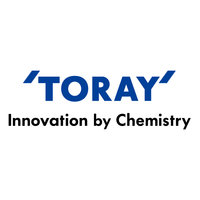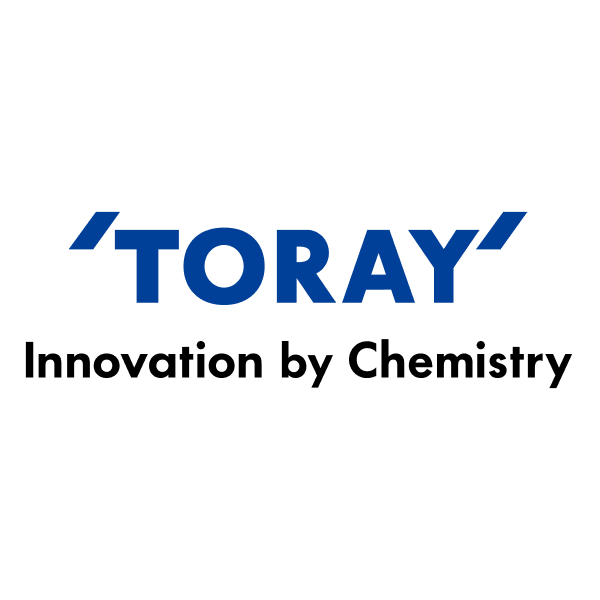
Toray Industries Inc
TSE:3402


Utilize notes to systematically review your investment decisions. By reflecting on past outcomes, you can discern effective strategies and identify those that underperformed. This continuous feedback loop enables you to adapt and refine your approach, optimizing for future success.
Each note serves as a learning point, offering insights into your decision-making processes. Over time, you'll accumulate a personalized database of knowledge, enhancing your ability to make informed decisions quickly and effectively.
With a comprehensive record of your investment history at your fingertips, you can compare current opportunities against past experiences. This not only bolsters your confidence but also ensures that each decision is grounded in a well-documented rationale.
Do you really want to delete this note?
This action cannot be undone.

| 52 Week Range |
635.2
962.2
|
| Price Target |
|
We'll email you a reminder when the closing price reaches JPY.
Choose the stock you wish to monitor with a price alert.
This alert will be permanently deleted.
 Toray Industries Inc
Toray Industries Inc


 You don't have any saved screeners yet
You don't have any saved screeners yet

Thank you very much for joining us today despite your busy schedule. On behalf of Toray Group, I would like to take this opportunity to extend my gratitude towards your continued understanding and your interest in our management and business activities.
Now I would like to report Toray's business results for the second quarter ended September 30, 2021, and the business forecast for the fiscal year ending March 2022.
Now I would like to follow the table of contents shown on Page 1. I would like to begin with a brief summary of business results for the second quarter ended September 30, 2021.
Please turn to Page 3. Consolidated revenue for the 6-month period increased 24.2% to JPY 1,063.0 billion compared with the same period of the previous fiscal year. Core operating income increased by JPY 36.1 billion to JPY 70.2 billion and profit increased by JPY 56.5 billion to JPY 60.9 billion.
Page 4 is about special items. Special items for the 6-month period improved by JPY 27.4 billion to minus JPY 1.2 billion compared with the same period of the previous fiscal year.
Page 5 is about assets, liabilities, equity and free cash flow. As of end of September, total assets stood at JPY 2,856.6 billion, an increase of JPY 7.7 billion from the end of the previous fiscal year, mainly due to increase in inventories. Total liabilities decreased by JPY 62.3 billion to JPY 1,464.2 billion compared with the end of the previous fiscal year, owing mainly to decrease in bonds and borrowings. Total equity increased by JPY 70 billion compared with the end of the previous fiscal year to JPY 1,392.3 billion. Owner's equity was JPY 1,305.4 billion. Interest-bearing liabilities was JPY 904.5 billion, and D/E ratio was 0.69 points. Free cash flow was positive at JPY 49.4 billion.
Page 6 explains about capital expenditures, depreciation and amortization and R&D expenditures. Capital expenditures for the 6 months period decreased by JPY 24.1 billion to JPY 40.9 billion on a year-to-year comparison. Meanwhile, depreciation and amortization increased by JPY 2.0 billion to JPY 61.1 billion. R&D expenditures decreased by JPY 0.6 billion to JPY 29.6 billion compared with the same period of the previous fiscal year. This graph on Page 7 describes the factor analysis of JPY 36.1 billion increase in core operating income for the 6 months period on a year-to-year comparison. The difference in quantity was a plus JPY 54.3 billion, mainly due to increase in sales and production, accompanying the recovery in economic activity. The net change in price was a minus JPY 13.4 billion due to the rise in raw material prices compared with the same period of the previous fiscal year. We have been working to pass on the rise in raw material prices to the sales price, but this has not been enough to cover the price increase in raw materials.
Cost variance, et cetera, was minus JPY 7.3 billion, mainly due to increases in operating expenses from increases in logistics costs and expenses associated with the resumption of sales activities. Also, production fixed costs increased with recovery in operating rates.
The chart on Page 8 shows the revenue and core operating income results by segment.
Using Page 9 and after, I would like to explain the results of each segment. First, Fibers & Textiles. Revenue of the overall segment increased 21.6% to JPY 401.5 billion compared with the same period of the previous fiscal year. And core operating income rose 53.9% to JPY 24.3 billion. Recovery in demand was seen both in Japan and abroad, which led to a positive difference in quantity, but the net change in price turned negative due to the increase in raw material prices compared to the same period of the previous fiscal year. In the apparel applications, some applications continued to be affected by COVID-19, while sports and outdoor applications performed strongly. In the industrial applications, the automotive applications recovered with increased sales volume.
Page 10 is the Performance Chemicals segment. Revenue increased 35.8% to JPY 444.5 billion compared with the same period of the previous fiscal year. And core operating income rose by JPY 28.2 billion to JPY 52.2 billion. Demand for automotive and display-related applications were strong and the difference in quantity was positive.
I would like to explain the conditions of each business on the next page. Demand in the Resins business was strong, given the rebound from the COVID-19 pandemic, resumed operations of automobile manufacturers and recovery of the Chinese economy. The chemicals business saw a recovery in the basic chemicals market. In the films business, polyester films for optical applications and electronic components performed strongly. While battery separated films for lithium-ion secondary batteries increased in the automotive and consumer applications. In the electronic and information materials business, OLED-related demand increased.
Page 12 is the Carbon Fiber Composite Materials segment. Revenue increased 10.8% to JPY 98.9 billion compared with the same period of the previous fiscal year, and the segment posted core operating loss of JPY 3.6 billion, a decline of JPY 3.3 billion from the same period a year earlier. The segment posted positive in difference in quantity due to increases in production volume as a result of the recovery in operating rates. However, the segment was affected by the increase in raw material prices.
I would like to explain the status of each application on the next page. Aerospace applications were affected by the decline in the production rate at major customers due to the impact of COVID-19. In sports applications, demand for bicycles, fishing rods and golf shaft applications for outdoor leisure remains strong. In terms of regulatory products among the industrial applications, demand for environment and energy-related fields led by compressed natural gas tank applications and the automotive applications for super luxury cars in Europe saw a recovery. As for large tow products, shipment of wind turbine blade applications remained strong.
Page 14, in the Environment & Engineering segment, revenue increased 9.8% to JPY 85.9 billion compared with the same period of the previous fiscal year, and core operating income rose by 53% to JPY 6.1 billion. In the water treatment business, demand for reverse osmosis membranes and other products grew strongly, while shipments to some regions were affected by the COVID-19. Among domestic subsidiaries in the segment, an engineering subsidiary experienced increases in the shipment of some electronics-related equipment.
Page 15 is the Life Science segment. Revenue increased 1.7% to JPY 25.1 billion compared with the same period of the previous fiscal year. And core operating income rose by 34.6% to JPY 1.1 billion. In the pharmaceutical business, sales of pruritus treatment, REMITCH, were affected by the introduction of its generic versions as well as by an NHI drug price revision, while overseas sales of orally active prostacyclin derivative DORNER increased. In the medical devices business, shipment of dialyzers for hemodiafiltration grew strongly in Japan.
Page 16 shows the business results of major subsidiaries and regions. At Toray International, sales of fibers and textiles, resins, films, chemicals and electronic and information materials increased. At Toray Engineering, shipment of electronics-related equipment increased. At our subsidiaries in Southeast Asia, a recovery trend was seen in the fibers and textiles market, although some applications continue to be affected by COVID-19. In the industrial applications, there were signs of recovery in the automotive applications. In the Performance Chemicals business, ABS resins saw a recovery in demand in the ASEAN market and the spread remains steady.
At our subsidiaries in China, in the Fibers & Textiles business, there were signs of recovery in the apparel applications. In the Performance Chemicals business, demand in China remained strong in the resins business, and we worked to pass on the rise in raw material prices to the sales price. As for our subsidiaries in Republic of Korea, the Fibers & Textiles business was affected by the rising raw material prices and sales of nonwoven fabrics decreased due to the fall in demand for masks. In the electronic and information materials business among the Performance Chemicals business, shipment of electronic circuit materials was strong. In the films business, sales of polyester films and battery separator films for lithium-ion secondary batteries increased. However, there was an impact from the rise in raw material prices and the increase in logistics costs.
Next, I would like to explain the consolidated business forecast for the fiscal year ending March 2022. Please turn to Page 18. The global economy, including Japan, is likely to continue its recovery with the rollout of coronavirus vaccines and progress in economic measures. However, the outlook is increasingly unclear, given concerns regarding a risk of resurgence and infections from variants, soaring raw material and fuel prices and production reduction of automobiles due to semiconductor shortage and supply chain constraints. For the fiscal year ending March 31, 2022, Toray revised its full year consolidated forecast announced on 4th of August, taking into consideration its business performance for the first half of the fiscal year and the business environment. It now expects revenue of JPY 2,220 billion and profit of JPY 93 billion, while the company left its core operating income forecast unchanged at JPY 130 billion. This forecast from October onwards is based on an assumed foreign currency exchange rate of JPY 110 to the U.S. dollar.
Page 19 shows the consolidated business forecast for fiscal year ending March 2022 by segment.
Page 20 shows the comparison of core operating income between the forecast announced on the 4th of August and the new forecast with breakdowns into segments. The factors behind the differences are shown on the right side of the table. This concludes my presentation.
[Statements in English on this transcript were spoken by an interpreter present on the live call.]